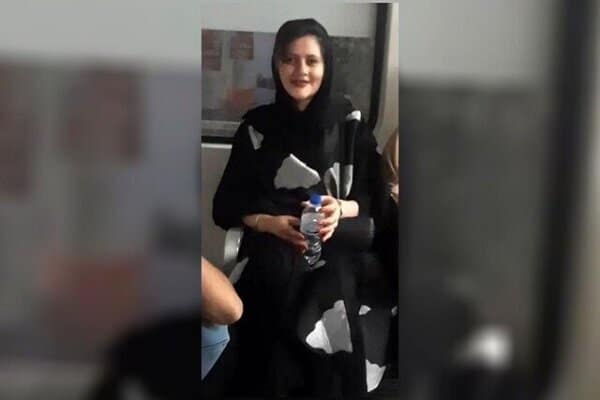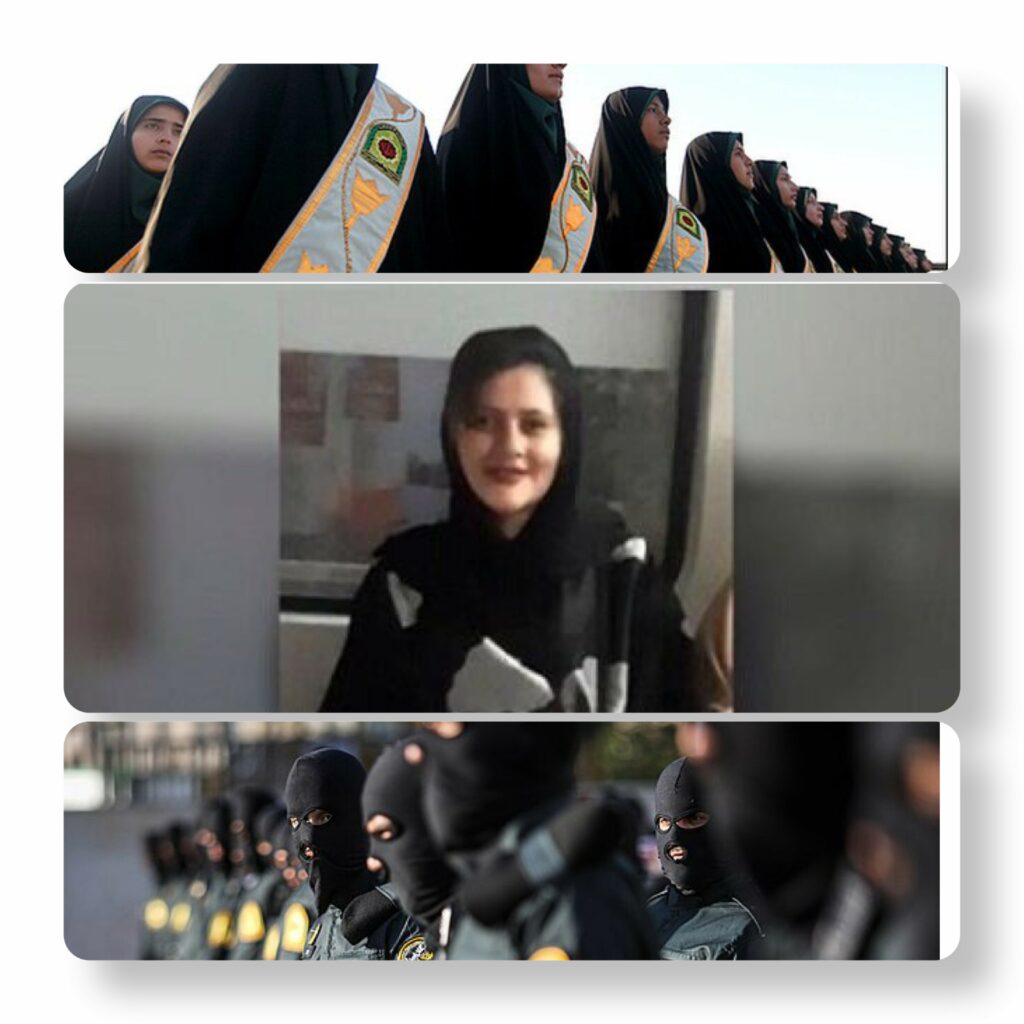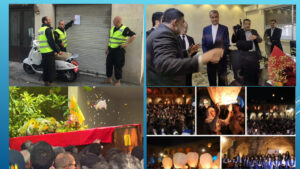Article by: Roy Cahanovich
Preface: Protest, Revolution, and Women in Iran
From September 2022 until now, Iran has experienced a significant and thunderous wave of protests. Some even see it as a real political tsunami trembling the foundations of the ayatollahs’ rule of the Islamic Republic of Iran.
The current wave of protests began with the arrest and beating to death of 22-year-old Mahsa Amini on 16.09.2022, who had been arrested two days earlier in Tehran by the morality police for not wearing the hijab as required by the constitutional decree. Another fatality deriving from the regime’s batons was 16-year-old Serena Esmailzadeh, who found her death while participating in a demonstration in memory of Amini.[1]

This current wave of protests has so far claimed dozens of deaths and hundreds of injuries throughout Iran and is a significant part of other protests that have erupted in Iran in recent years. The first wave of protests was in 2009, which, according to additional Middle Eastern and Iranian scholars, formed the basis of the Arab Spring of January 2010, constituting the beginning of a growing and expanding fissure in the institutions of the Islamic regime. This wave of protest, which included millions of students who swept the streets of various cities, erupted when it became known that the presidential election results between Mahmoud Ahmadinejad and Mir Hossein Mousavi had been forged. This current wave of protests has so far claimed dozens of deaths and hundreds of injuries throughout Iran and is a significant part of other protests that have erupted in Iran in recent years. The first wave of protests was in 2009, which, according to additional Middle Eastern and Iranian scholars, formed the basis of the Arab Spring of January 2010, constituting the beginning of a growing and expanding fissure in the institutions of the Islamic regime. This wave of protest, which included millions of students who swept the streets of various cities, erupted when it became known that the presidential election results between Mahmoud Ahmadinejad and Mir Hossein Mousavi had been forged. The demonstrators’ slogan at the time was “Where is my vote?” knowing that the regime had made sure to eliminate their votes for Mousavi, simply not counting them. The 2009 protests were dubbed “Iran’s Green Summer” because the many hopeful and shiny-eyed demonstrators wrapped themselves in green scarves and waved green flags as a symbol that united them under Mousavi’s scepter. It is important to note that even in this wave of protests, many women were at the forefront of the struggle, including Neda Agha-Soltan, who also died during a turbulent demonstration on 20.06.2009, thus becoming a symbol of the revolution. After this wave of protest, Iran experienced additional waves of protests, some focused and some decentralized, including the economic protests in 2017 and 2019, and up to the present wave of protests, which has a civil tone with a unique emphasis on individual rights in general and women’s rights in particular.
Iran’s Constitution: Between Living in the Shadow of Intimidation and Exclusion and Personal and Public Empowerment
In general, Iran’s constitution was established as early as December 1979 by Ayatollah Ruhullah Khomeini, the founder of the Islamic Republic, undergoing changes and adjustments with the latter’s death in June 1989. The constitution explicitly states that every girl from the age of 7 who goes out into public must wear a head covering the Iranians call a Rosary or Hijab, which after about 40 years, has turned out to be the official symbol of protest against the regime and its representatives. Moreover, men are also not free of regime restrictions and are subject to a strict law prohibiting them from wearing short pants in public.
Women in Iran are also affected in other areas of life, such as the prohibition on them from visiting and watching sporting events alongside men, etc. At the same time, the women, for their part, do not give up and try to stand up for their basic rights, boldly defying the regime’s decisions and taking creative steps to circumvent those abusive decisions.
Therefore, it’s understandable that the slogan accompanying the past month’s events is ZAN (woman), ZANDEGHI (life) AZADI (freedom). This slogan has weighty significance and proves beyond a doubt that the women in Iran are leading a significant move to change the face of Iran and live there in absolute freedom and without coercion. The same women, even if they are high school or university students in Iran, are the ones who join hands and wave the hijab with great courage to the cheers of the masses, thereby tying their fate together for a better future in their country.
Social networks, satellite dishes, and communication apps are tools in the demonstrators’ hands
Iran’s current population is close to 83 million (estimate, January 2022), half of whom are under the age of 40; hence the perspective of a significant number of them is far from the extremist religious ideology outlined by Khomeini with the establishment of the Islamic Republic in February 1979.
The residents of Iran, in general, and its young people in particular, explore their world and the world beyond Iran’s borders via satellite dishes, internet news, and cultural sites. Above all, they make use of their smartphones. These smartphones allow the general public in Iran, especially the young and educated, as well as the entire population of the world, access to a wide variety of social networks, including Instagram, Twitter, Facebook, and others, alongside other applications and communication tools such as Telegram. Social networks allow young people to communicate among themselves, organize a protest when necessary, and report on what is happening in Iran regularly and routinely, even if it is reporting and sharing current information with foreign parties.
The regime in Iran is aware of the above, and since it is mainly concerned with its survival and governance, it draws conclusions from each event and wave of protests bearing harsh measures against demonstrators on the one hand and slowing down the Internet to make it difficult for the demonstrators to organize and protest against the regime on the other. At the same time, masses of demonstrators, in collaboration with foreign elements inside and outside Iran, are finding other creative ways to provide pictures and testimonies from Iran, as we see in the current events.
Past protests and the leader’s figure are a basis for the success of contemporary and future protests
Iran is a vast country with a decisive influence on the Middle East region while also trying to expand its influence throughout the entire world, even though historically, it is a country that has experienced four revolutions in one century, even though historically, it is a country that has experienced four revolutions in one century. The first revolution at the beginning of the 20th century (1906) revolved around the question of the constitution; the next revolution was the revolution of the Pahlavi kings (1925, 1941), and finally, the revolution of clerics led by Khomeini (1979); Thus, protests, in general, are not unfamiliar to the various regimes and inhabitants of Iran.
In our estimation, also this time, the Iranian regime will succeed in eradicating the protest for two main reasons: first, in light of past events, the regime has drawn conclusions and has learned the basics of the protests, therefore, managing to act against them effectively and wisely. Second, in the past and present, and certainly in the future, the regime will continue to take harsh measures, including indiscriminate arrests and killings of protesters and their relatives who try to undermine the foundations of the regime in Tehran.


At the same time, the fact that must be addressed is the weak point on the part of the protestors in the last few years’ events, which is also relevant to the current wave of protests; Who is the leading figure of the demonstrations? In the events of the past and even today, no charismatic or dominant figure led the demonstrations, and therefore the regime succeeded in its ways in eradicating the demonstrations even if it took many weeks.[2] It is possible that if such a figure emerges and succeeds in bringing together all the protesters, becoming an alternative to the current government, alongside financial support from the outside, the protesters will be able to bring about a significant move towards overthrowing the current regime in their country.
It should be noted that the current wave of protests is sweeping through the wide public and among many celebrities, including intellectuals, cultural figures, and athletes on the football team, such as Sardar Azmoun, most of whom are fed up with the regime’s violent conduct against its citizens.
History teaches us that the end of each wave of protests brings a bigger and more significant subsequent wave. The current wave, more than anything else, symbolizes the fatigue and exhaustion, frustration, and despair that accompany the people of Iran every day, both on individual freedoms and at the economic and social levels of humanity.
In addition, we have witnessed two fascinating aspects inside Iran that have surfaced in the past month. The first is the significant erosion of the element of the Iranians’ fear of the regime and its power. Thus, demonstrations in support of the regime easily turn into counter-demonstrations and even slogans against the Supreme Leader, such as “death to the dictator” and even acts such as the beheading of a statue of Khomeini in the city of Nishapur (northeastern Iran). Second, there has been a significant increase in the growing power of women in Iran, which in recent years has become the mouthpiece of the general public that opposes the regime.
Finally: Iran, where to?
In conclusion, over the years, Iran has experienced various revolutions whose basis changes from time to time. As of now, the wave of popular protest that encompasses all sectors of the population and touches on different ages does not stop and even intensifies frequently. Even if the waves of protest fade on Thursdays and Fridays, on Saturdays (the first day of the week in Iran), they erupt in full force and intensity.
From this, only one conclusion arises: that the Islamic Republic is the enemy of Iran and its citizens. Those looking for a better and safer future for themselves cannot find it under the harsh theocratic baton of the country. Most Iranians seek a better future for themselves, both economically and humanly. Therefore, they unite, even if not in an orderly manner, and go out to the various protests in the streets of Iran, with the view and understanding that virtual protests are not enough and that now is the time to speak out openly against the regime and its institutions, which are robbing them of their basic rights to a noble and dignified life.
Our assessment is that we can expect to see additional waves of protest in Iran in the coming years, and the process (even if it is very slow) of the regime’s fall is underway. At the same time, no person is a prophet and therefore does not know how to predict the future, but an in-depth analysis of the events of recent years in Iran raises the obvious conclusion that the power and influence of the Islamic regime in Iran are on a downward trend.
It should be clarified that, as of now, the regime is still showing signs of life and control of the situation, but at the same time, there is also evidence of broad fissures in the regime and its institutions, such as the replacement of senior officers in the revolutionary guards. It is possible that the waves of protest expected in the future, weak or strong, will be united at the end of the process into one huge and noisy civilian tsunami that will wash the streets of Iran and will lead to the fall of the regime definitively and completely; [3]However, for this to happen, it is necessary to mobilize auxiliary resources outside of Iran, whether in the form of active underground opposition, the flow of large sums of money, and the channeling of all the forces – internal and external – to establish an alternative government to the one that dominates Iran today. An Iran of containment, equality, and a better future for its citizens.
Roy Cahanovich is a research fellow at the Alma Center. is a doctoral student in the University of Ariel. He is a researcher and expert on the Middle East, especially Iran, Islam, and terrorism.
[1] Her parents were asked by representatives of the regime to declare that she had committed suicide, but they refused to do so.
[2] During the 1979 revolution, most of the Iranian public rallied around Khomeini and his beliefs, therefore the path to the success of the revolution under his leadership was clear.
[3] When the time comes, the death of Supreme Leader Ali Khamenei and his funeral procession could bring on a huge wave of protest by most of the regime’s opponents. As far as is known, the regime is also preparing for this day.






